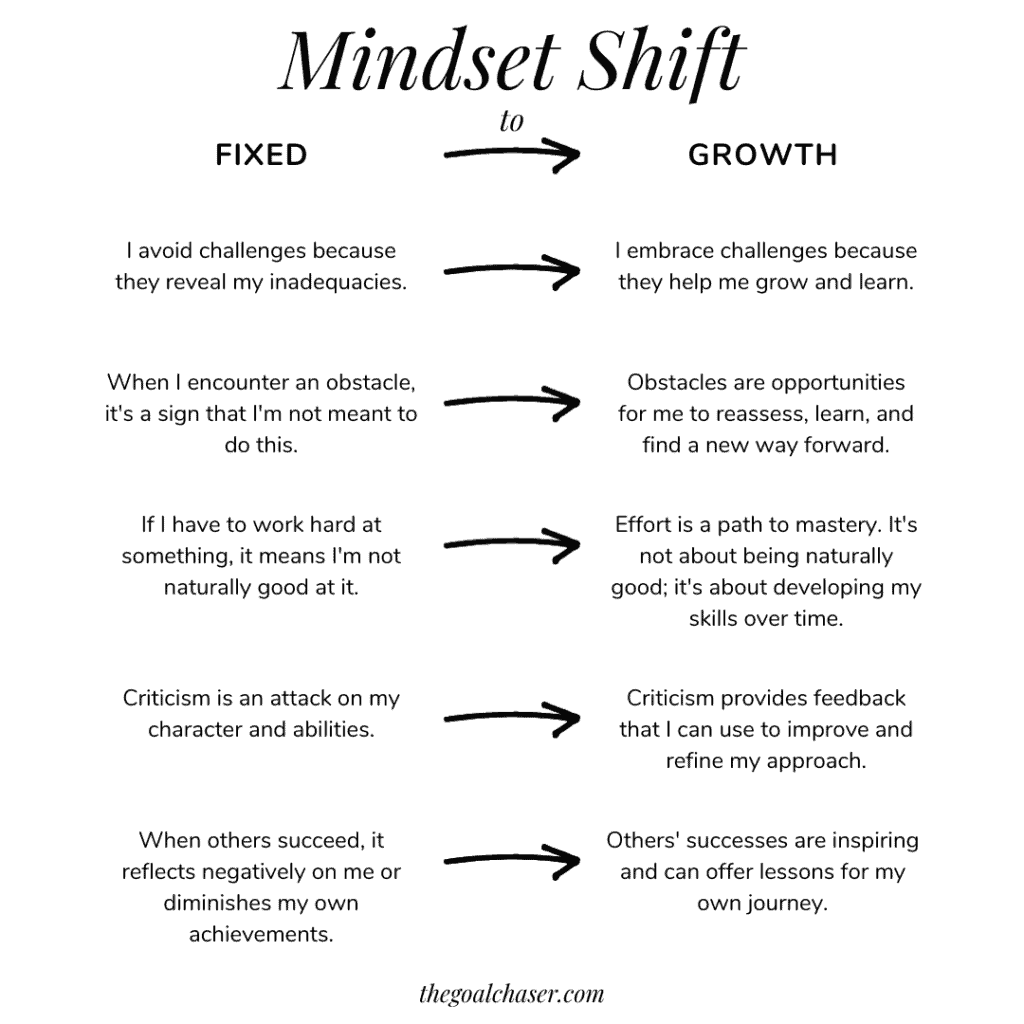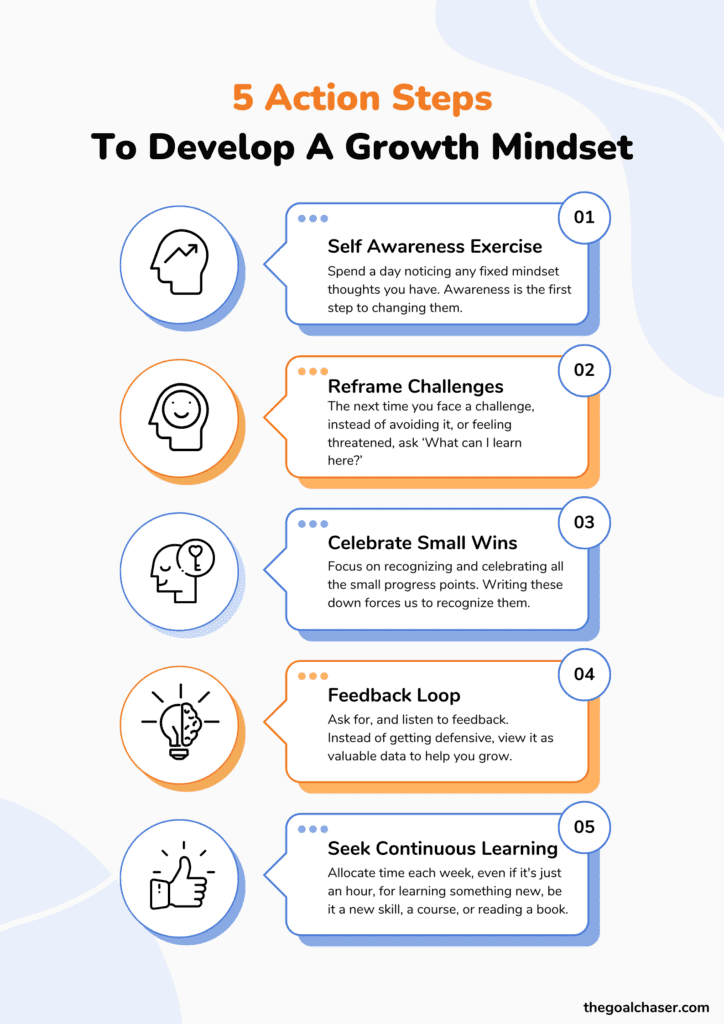The Mindset Shift: From Fixed to Growth Mindset (+ Action Steps)
We often hear phrases like, ‘You either have it, or you don’t,’ or ‘That’s just the way I am.’
Thoughts like these can come from what Dr. Carol Dweck, a Stanford psychologist, refers to as a ‘fixed mindset.’
But what if we could shift our perspective to something more empowering? Like the ‘growth mindset‘?
In this post we explore the main differences between a fixed and growth mindset, and why cultivating a growth mindset can be truly transformative.
We also share some action steps we can take to start nudging, or shifting, from a fixed to growth mindset today.
Fixed Mindset vs. Growth Mindset
Fixed Mindset
With this mindset, people believe that their basic abilities, intelligence, and talents are fixed traits.
They believe that they’re born with a certain amount of intelligence and talent, and nothing can change that.
Pros:
- Provides a level of comfort.
- Less risky as there’s no fear of failure if we don’t even try.
Cons:
- Can lead to avoiding challenges to prevent failure.
- Missed opportunities for growth.
- A tendency to give up easily.
Growth Mindset
This is the belief that abilities can be developed through dedication, hard work and being open-minded.
It’s not just about natural talent, but more about effort, learning, and perseverance.
Pros:
- Encourages a love for learning and resilience.
- Leads to better performance over time.
- Encourages facing challenges and persevering through setbacks.
Cons:
- Requires consistent effort and can sometimes be uncomfortable.
Why A Growth Mindset Is Better
Embracing a growth mindset directly influences our ambitions and aspirations.
When we start believing in our possibilities, we naturally become more daring in our pursuits.
With a growth mindset, the fear of failure diminishes, because even setbacks are seen as valuable learning experiences, rather than insurmountable defeats.
This newfound courage propels us to chase after our dreams with increased enthusiasm and confidence.
Instead of thinking, “I’m not good enough,” or “I don’t have the talent for this,” a person with a growth mindset thinks, “I may not know how to do this yet, but I can learn.”
This shift in perspective means that we’re more likely to set higher goals, take calculated risks, and venture outside of our comfort zones.
How To Develop A Growth Mindset
Think of developing a growth mindset as like tending to a garden: it requires attention, nourishment, and consistent effort.
It’s not a ‘one and done’ type activity.
It’s about retraining our brain to see challenges as opportunities, and failures as stepping stones.
While our inherent traits, and existing patterns, might nudge us in one direction, with awareness and deliberate actions, we can nurture a mindset that embraces growth, learning, and resilience.
As you embark on this transformative journey, the following action steps will guide you in nurturing and strengthening your growth-oriented perspective.
Action Steps For Developing A More ‘Growth Mindset’:
Key Takeaways:
Understanding Mindsets:
- Fixed Mindset: Abilities and intelligence are static.
- Growth Mindset: Abilities and intelligence can be developed through effort.
Benefits of a Growth Mindset:
- Welcomes challenges as opportunities.
- Develops resilience and perseverance.
- Fosters a love for lifelong learning.
- Gives a sense of control over personal growth.
Transitioning to Growth Mindset:
- Recognize and challenge limiting beliefs.
- Embrace setbacks as feedback.
- Prioritize effort and the learning process.
The shift from a fixed to a growth mindset isn’t just a mental game; it’s a life changer.
It’s the difference between seeing life through a limited lens and embracing the vast potential that lies within all of us.
You may also like:







